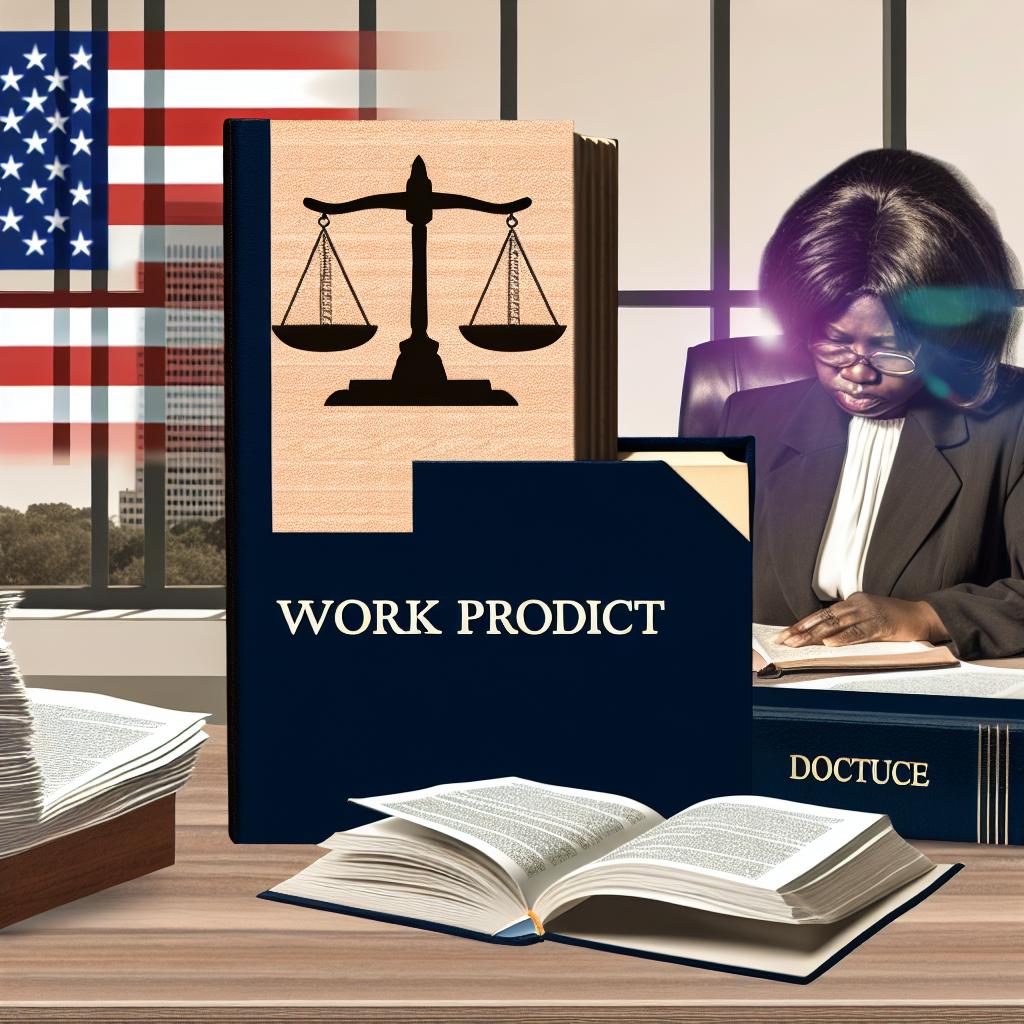Understanding the Work Product Doctrine in U.S. Discovery
The work product doctrine is a pivotal element in U.S. litigation, serving to protect materials prepared in anticipation of litigation from being disclosed to opposing parties during the discovery process. Originating from the landmark decision in Hickman v. Taylor in 1947, this doctrine endeavors to strike an equitable balance between one party’s need to access evidence and preserving the confidentiality of an attorney’s strategic efforts.
Origin and Purpose
The fundamental objective of the work product doctrine is to safeguard the integrity and fairness of the legal process. It underscores the necessity for lawyers to prepare their cases without undue encroachment by opposing parties, thus promoting robust advocacy. This doctrine ensures the protection of materials that embody an attorney’s legal theories, mental impressions, conclusions, or strategic planning related to a case, thus maintaining the adversarial nature of the legal system.
Scope and Application
According to the Federal Rules of Civil Procedure, particularly Rule 26(b)(3), the reach of the work product doctrine encompasses documents and tangible items formulated in anticipation of litigation or trial. This includes not only items crafted by attorneys but also those developed by their agents or representatives. However, it is essential to note that this protection does not extend to the purely factual information present within these materials, which remains subject to discovery.
Categories of Work Product
Within the framework of the doctrine, there are two distinct classifications of work product:
1. Ordinary Work Product: This type includes documents and tangible items made in preparation for litigation. While these are generally shielded from discovery, this protection can be bypassed if the opposing party demonstrates a significant need coupled with an inability to acquire the equivalent information through other means, without experiencing undue hardship.
2. Opinion Work Product: This classification pertains to an attorney’s mental impressions, conclusions, opinions, or legal theories. Due to the profoundly sensitive nature of these materials, they are granted nearly complete protection. This protection underscores the crucial role of safeguarding an attorney’s reflective and strategic thought processes when preparing for litigation.
Limitations and Exceptions
Although the protection conferred by the work product doctrine is comprehensive, it is not without its confines. For ordinary work product, the protection may be lifted if a party demonstrates both a substantial need for the material and an inability to acquire the substantial equivalent by other means without undue hardship. Exceptions to the protection of opinion work product are exceedingly uncommon, generally requiring extraordinary circumstances for the protection to be lifted.
Ensuring the Proper Application
To effectively leverage the work product doctrine, legal professionals must be adept at navigating its nuances. The doctrine not only provides a protective shield for an attorney’s strategic formulations but also necessitates a carefully calculated approach when asserting or challenging the doctrine’s application. Attorneys are tasked with detailed documentation of their preparations to clearly distinguish protected materials from discoverable factual information. Moreover, litigants must remain vigilant to ensure that their exploratory efforts during discovery do not inadvertently encroach upon the protected materials of their adversaries.
Criticisms and Contemporary Challenges
Despite its fundamental role in shielding attorney work, the work product doctrine has faced criticism and challenges, particularly in the context of contemporary litigation practices. The advent of electronic discovery has posed significant hurdles as legal professionals are tasked with discerning between discoverable and protected materials amidst vast quantities of electronically stored information (ESI). Moreover, the rise of legal technology tools and collaboration platforms has further complicated the delineation of protected materials. Legal professionals must, therefore, maintain vigilance to ensure compliance with the doctrine amidst these evolving challenges, continuously adapting their practices to uphold the integrity of protected materials.
Conclusion
The work product doctrine is an integral component of the legal landscape in the United States, affording attorneys the indispensable ability to prepare for litigation with assurance of confidentiality. It represents a delicate equilibrium between the necessity for discovery and the imperative to protect attorney work from premature exposure. Understanding its scope, limitations, and evolving implications remains critical for legal practitioners and clients alike. By doing so, they ensure that the doctrine is judiciously applied, respecting both the historical precedents and evolving challenges that shape its application. In a constantly transforming legal environment, the work product doctrine remains a steadfast guardian of attorney preparations and strategic thinking, thereby contributing to the overall fairness and integrity of the adversarial legal process.
